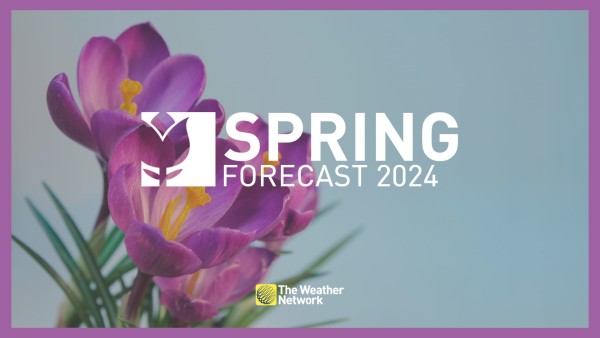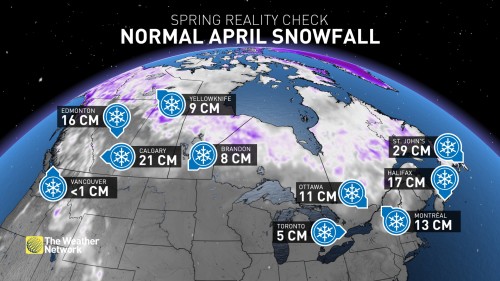However, temperature patterns are expected to be more variable than usual, with periods of colder than normal temperatures and the risk of some late-winter-like high-impact events that would interrupt the mild pattern at times. Drought remains a major concern in much of the province, and wildfires will be an increasing concern late in the season.
Saskatchewan and Manitoba
Spring is known for its extreme temperature fluctuations as we make the turbulent transition from winter to summer. This spring is expected to feature noteworthy periods of warmer than normal weather that will at times be interspersed with significant periods of cold weather, which will include some late-winter-like high-impact storms.
After a mild winter with limited snowfall, the risk of spring floods is lower than usual. Drought remains a major concern for parts of the region, and smoke from wildfires will be an increasing concern as we head into summer. However, we are cautiously optimistic that the pattern will become wetter during May, especially for the central parts of the region.
Watch: How this moody season will affect flood risk across the prairies
ontario
Spring weather started very early this year, and this is just a prelude to what's to come. We expect that warmer than normal temperatures will dominate the season.
However, the mild spring will be moody at times with periods of colder than normal temperatures and the risk of significant late-winter-like weather, which will test our patience as we wait for more consistent warm weather.
A mild winter followed by early spring means that spring plants, including flowers, etc., have to be out ahead of schedule. Unfortunately, a warm spring does not eliminate the risk of late-season cold weather. Therefore, we have a high risk of late-season frost or freeze after the start of the growing season.



